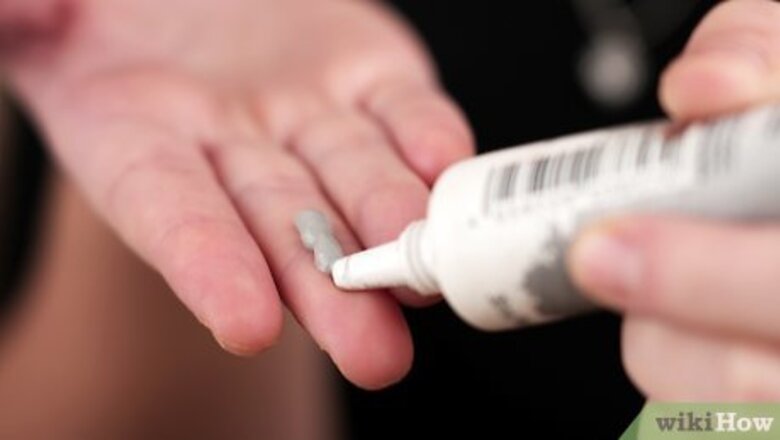
views
Applying Makeup Primer
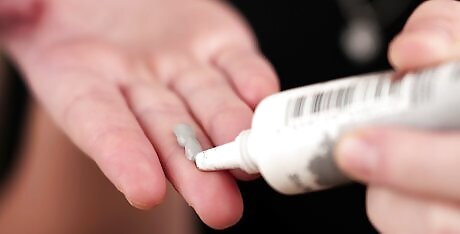
Squeeze a dime sized amount onto your fingertips or brush. Primer not only helps your skin look more even and radiant, it also holds your makeup in place. Start with a small amount and add more primer if necessary. Using your fingers is often better for creating an even layer. If you want to use a brush, try a foundation brush. You could also use a damp sponge.
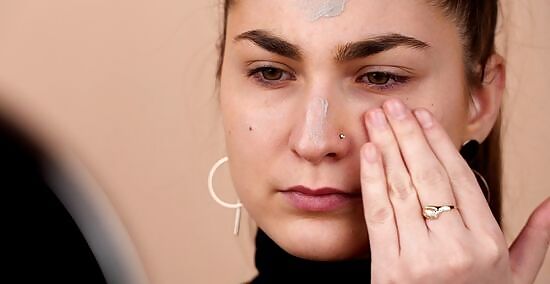
Start on your nose and work your way out. This is the easiest way to apply primer. Smooth the primer out from your nose, working your way onto your cheeks and forehead.
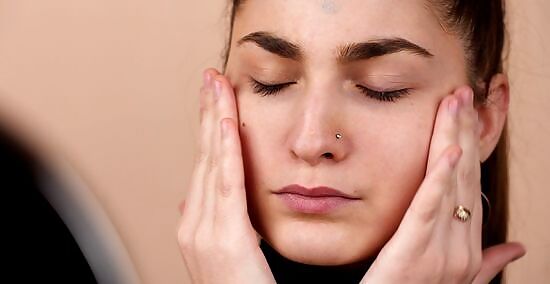
Blend the primer into your skin the same way you do foundation. Primer is a base for the rest of your makeup. However, it can also be used as a lighter form of foundation, so apply it in the same way that you would apply your foundation. If you like a natural look, use primer as your foundation, and use concealer to fix up any problem areas.
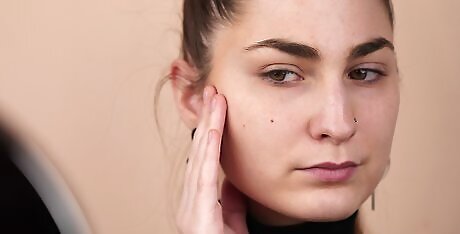
Let the primer dry for 1 minute. Don't apply more makeup right away, as you could accidentally rub off some of the primer. It needs time to dry.
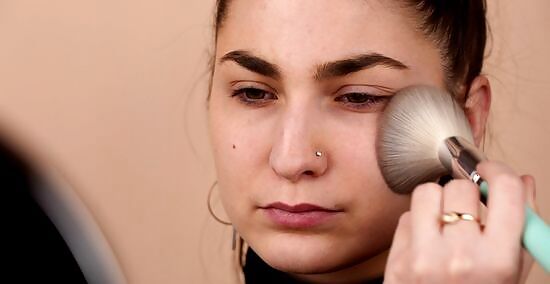
Seal the primer with a translucent powder. If you don't seal your primer, then it will come off when you touch your skin. This is because the oils in your fingers will react with the water in the primer. A light dusting of powder is all you need.
Choosing the Right Concealer
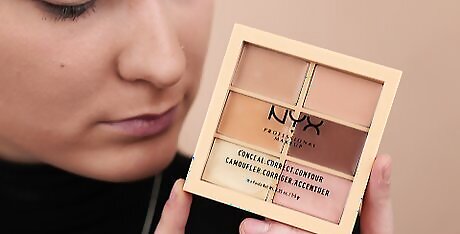
Look for a concealer that is labeled as long-lasting. There are tons of makeup brands, and each brand has tons of different concealers. If you're looking for long-lasting concealer, look for that wording on the packaging. If you need help, look online for long-lasting concealers or ask a professional in a beauty store.
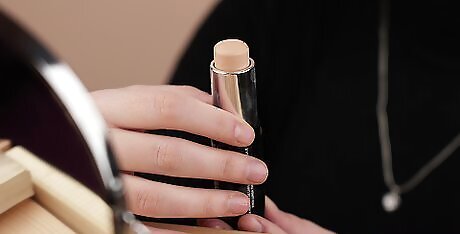
Use a stick concealer if you want to cover dark circles under your eyes. Stick concealers come in swivel-up tubes – similar to lipstick. Stick concealers are best used to provide coverage for dark circles under your eyes. They are usually extremely thick concealers, so you'll only need a little bit. Although they are usually inexpensive and easy to apply, stick concealers are typically too thick and heavy to cover up breakouts. Stick concealers may clog your pores. They usually aren't a good choice if you have oily skin.
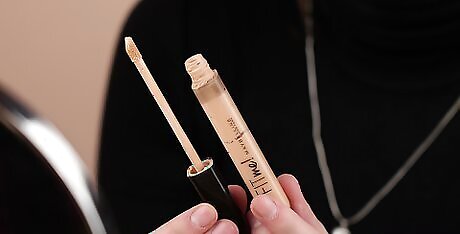
Use a liquid concealer if you have oily skin. This type of concealer usually comes in a squeeze tube, or a tube with a wand applicator. Many concealers on the market will come in a liquid formula, even if they dry matte. If you have acne, look for a liquid concealer that's formulated to fight acne.
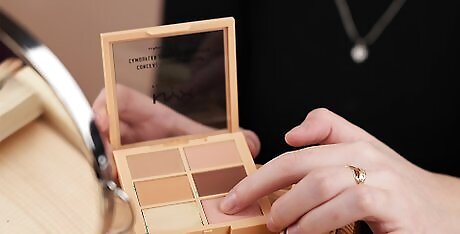
Use cream concealer if you have dry or combination skin. Cream concealers usually come in small jars or squeeze tubes and provide medium to full coverage for dark under-eye circles. Cream concealers can clog pores, so you shouldn't use them if you're prone to acne.
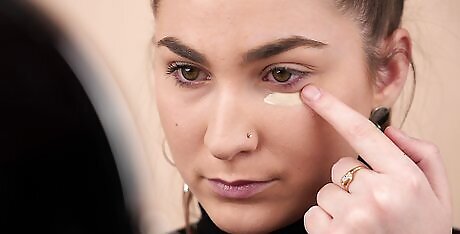
Choose a matte-finish concealer if you have oily skin. These concealers usually come in compact cases. They are applied like a cream, but dry with a matte-powder finish. This type of concealer is good for those with oily skin, but not for those with acne or dry skin.
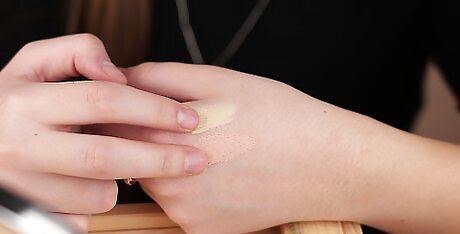
Pick the right shade of concealer. To cover dark circles under your eyes or dark spots on your face, choose a concealer that is 1 shade lighter than your natural skin tone. If you want to cover acne, you should use a concealer that matches your natural skin tone or is slightly lighter. If you are covering your dark under-eye circles and breakouts, you should consider using 2 different types of concealer. Keep in mind that oily skin can oxidize the concealer, which can make it appear darker. If your skin is very oily, you may want to try a lighter shade of concealer.
Setting the Concealer in Place
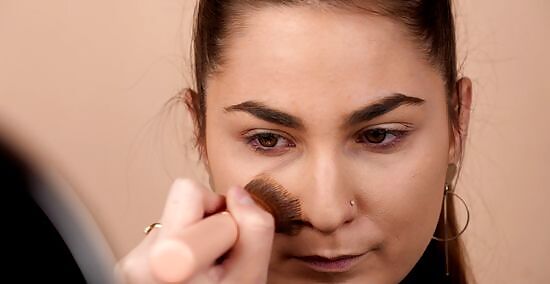
Put on your foundation. Some people apply concealer before foundation, but it's actually more effective the other way around. Use your finger tips or foundation brush to apply your foundation. Use circular motions to blend everything in so that it looks nice and smooth. Some concealers are meant to be applied before foundation, so check yours when in doubt. Most formulas work best over foundation. Choose the right foundation for you. Some foundations work better with dry skin, some work better with oily skin. Some foundations have a matte finish, while others have a dewy finish. When choosing a foundation, do some research or ask a professional to help you find the foundation that is right for you.
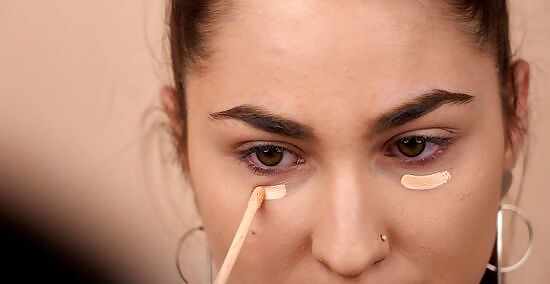
Apply concealer to your problem areas. When applying concealer, you can use your fingers or a small brush to blend it in – whichever you'd prefer. Put small dabs of concealer onto the area you'd like to cover, and blend in the dabs with your fingers or with your brush. Use small circular motions to blend in the concealer around the area you're trying to cover. However, avoid blending right over whatever you're covering, as it will remove the concealer. To apply concealer to your under-eye area, lightly dab concealer along the bags of your eyes and proceed to blend it in. Using your ring finger to blend in this area tends to work very well. If you're covering dark bags, you should get a concealer that is a shade lighter than your skin tone. To cover blemishes with concealer, lightly dab concealer on top and around of each blemish. Then, take your finger or a concealer blush, and blend in the concealer. Use a concealer that is the same color as your natural skin tone to cover acne. If you're covering bright red acne, consider getting a concealer that has a yellow tint to it. This will help balance out the red.
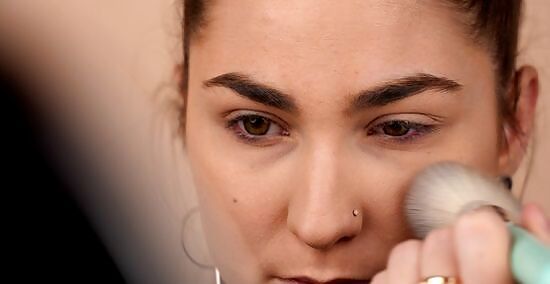
Use a setting powder to set your concealer. Once you've applied your concealer and foundation, set your face makeup with some setting powder. This will help keep your makeup in place all day long and prevent your face from looking too shiny. Apply the powder with a large powder brush, and use circular motions for blending.

Don't touch your face during the day. Touching your face throughout the day is never a good idea. When you touch your face, you're transferring the oil and dirt from your hands onto your face. This can cause your makeup to smudge and cause your face to break out. EXPERT TIP "Use rice paper sheets to dab away excess oil throughout the day if you have oily skin." Laura Martin Laura Martin Licensed Cosmetologist Laura Martin is a Licensed Cosmetologist in Georgia. She has been a hair stylist since 2007 and a cosmetology teacher since 2013. Laura Martin Laura MartinLicensed Cosmetologist




















Comments
0 comment